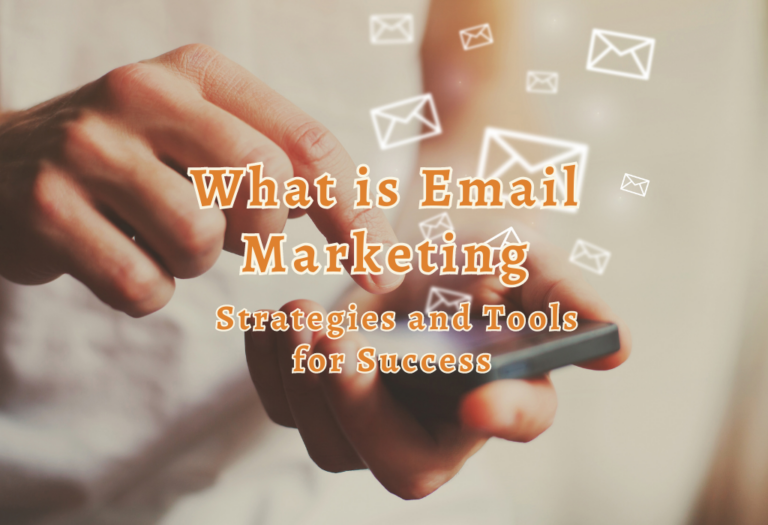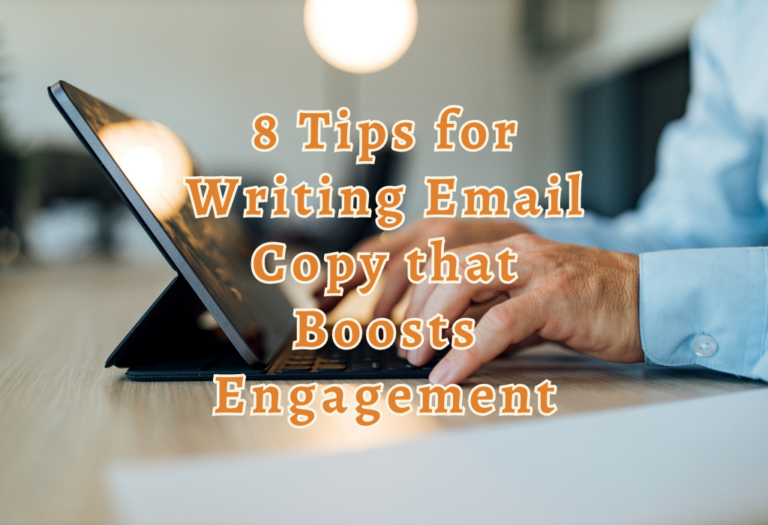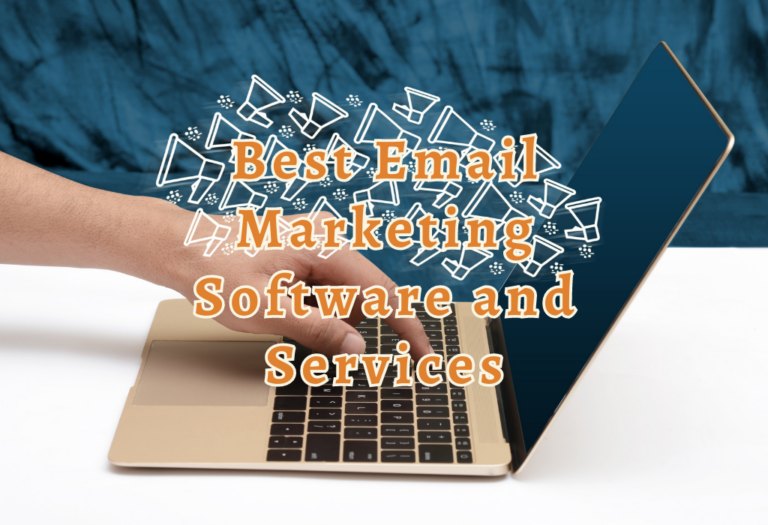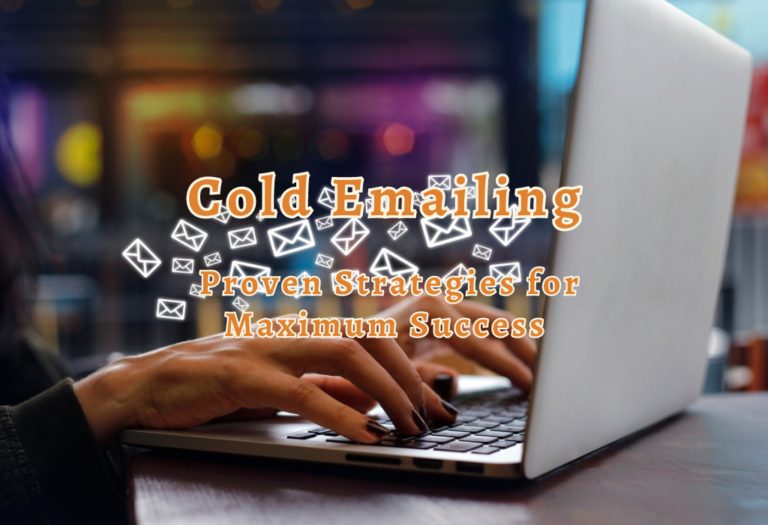Email marketing has the potential to nurture leads as it utilizes a platform that people already rely on regularly. In fact, over half of the world’s population, which is more than four billion individuals, use email frequently.
The revenue generated by email marketing was estimated at $7.5 billion in 2020 and is projected to increase to $17.9 billion by 2027, highlighting its effectiveness as a marketing tool.
To take advantage of this powerful market, it’s essential to implement a winning email marketing strategy that is tailored to your brand and audience. This approach enables you to utilize real-time data for creating measurable successes, learn from past campaigns, and optimize future efforts for maximum impact.
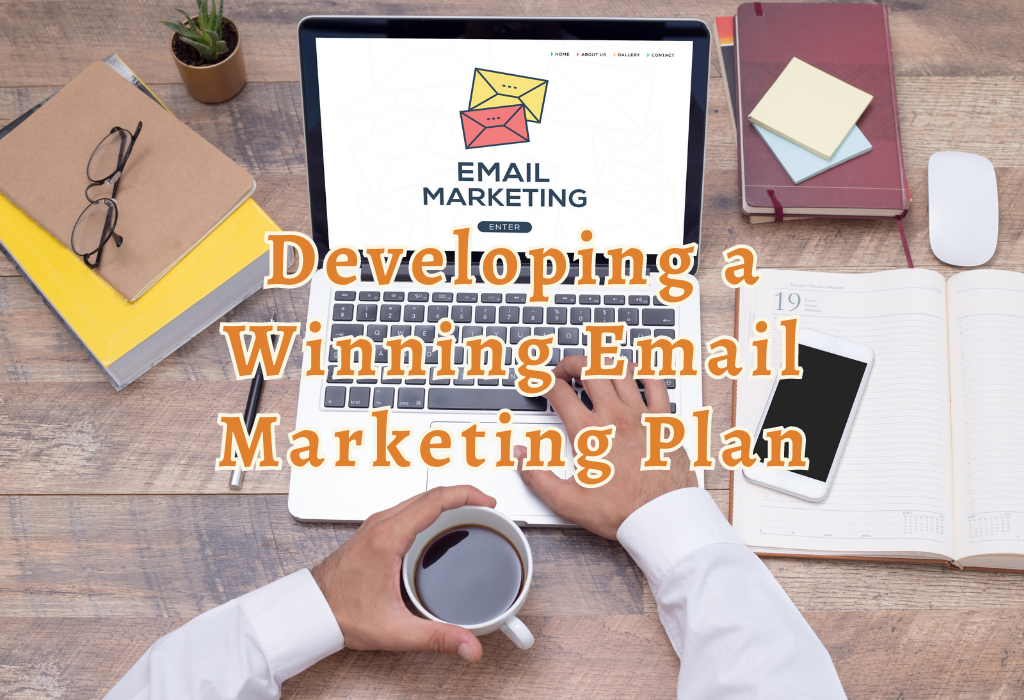
More Resources :
The Power of Email Marketing
With over 4.5 billion users worldwide, email marketing remains the most popular communication form and is ranked the most effective marketing channel. For every $1 spent on email marketing, businesses can expect an average return of $42. Marketers have seen a 760% increase in revenue from using email campaigns and building email lists.
High ROI for Businesses Investing in Email Marketing
Email marketing provides a high ROI, as it is cost-efficient and can be used to reach numerous people rapidly. According to Campaign Monitor’s benchmarks report, industries such as non-profits, retail, travel & hospitality, among others see impressive open rates and click-through rates that contribute significantly to their overall success.
Developing a Winning Email Marketing Plan
Increase Revenue Through Targeted Campaigns
By dividing your contact list, you can create individualized campaigns that reflect each segment’s specific requirements and interests, leading to improved engagement and a boost in revenue through relevant offers. By segmenting your list, you can create personalized campaigns that resonate with each group’s unique needs and preferences. This not only leads to higher engagement rates but also helps drive revenue by providing relevant offers and promotions.
For example, Shopify shares a case study where an online store saw a 123% increase in sales after implementing segmented email campaigns based on customer behavior data such as browsing history, past purchases, and abandoned carts.
Building Your Email List Organically
Email marketing success begins with a high-quality, engaged email list. It’s essential never to buy email lists due to legal issues and poor ROI. Instead, focus on building your list by asking permission from potential clients who willingly opt-in, ensuring you deliver valuable content that maintains trust throughout the process while keeping unsubscribe rates low.
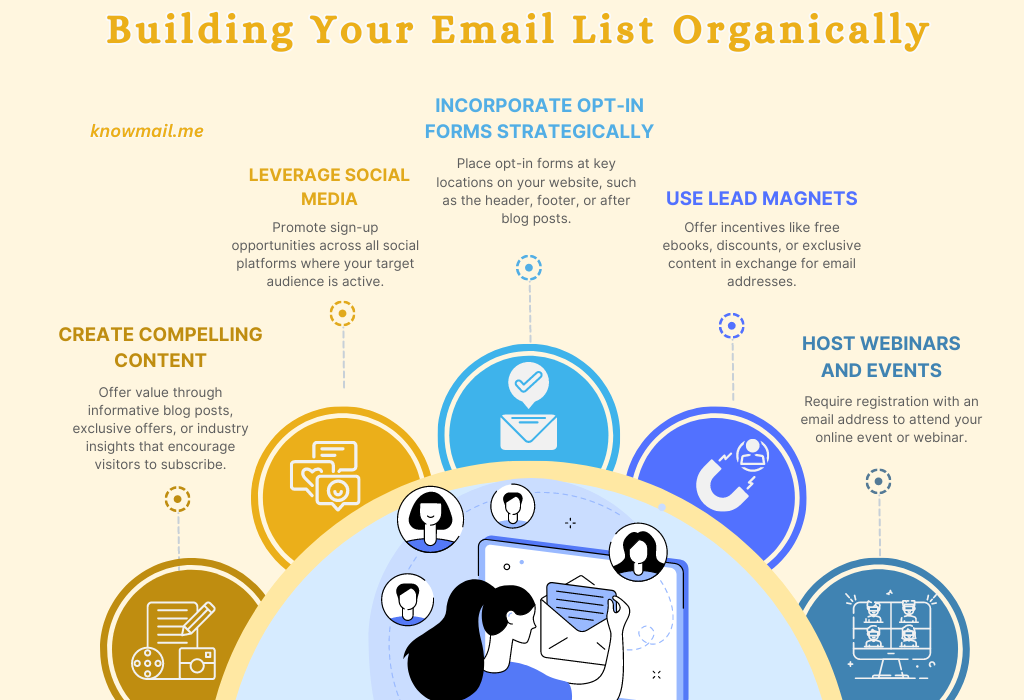
Legal Implications of Buying Lists
Purchasing email lists can lead to violations of digital privacy laws such as GDPR and CCPA, resulting in hefty fines for non-compliance. Moreover, sending unsolicited emails damages your sender reputation and increases the likelihood of being marked as spam or blacklisted by ISPs.
Importance of Maintaining Trust with Subscribers
Gaining consent from users before adding them to your mailing list fosters trust between you and your audience. This ensures better engagement and helps build long-term relationships with customers who are more likely to convert into loyal brand advocates.
Tips for Growing an Organic Email List:
Optimize Emails for High Open Rates & Click-through Rates
Email marketing is an essential tool in any digital marketer’s arsenal, but optimizing your emails for high open and click-through rates is crucial. According to Campaign Monitor, 65% of small businesses have average open rates between 11-50%, while 77% of them experience click-through rates between 0-10%. To improve these metrics, consider segmenting your list based on factors such as engagement rate and purchase history.
Segmenting Your Audience for Better Targeting
One effective way to boost email performance is by segmenting your audience. This involves dividing your subscribers into smaller groups based on shared characteristics or behaviors, allowing you to send more targeted content that resonates with each group. For example, you could create segments based on:
Mailchimp research shows that segmented campaigns receive a higher open rate than non-segmented ones – a clear indication of the benefits segmentation can bring.
Improving Open Rates with Personalized Subject Lines
Your subject line plays a significant role in whether recipients decide to open your email or not. Personalizing subject lines using subscriber data can make your emails more appealing and relevant to each recipient. Some personalization tactics include:
A study by Experian Marketing Services found that personalized subject lines led to a 26% increase in open rates compared to generic ones.
Using Subscriber Quizzes & Surveys
Email marketing is all about understanding your audience and delivering relevant content. One way to collect valuable data for segmentation purposes is by utilizing subscriber quizzes and opt-in surveys. These tools can help you identify behaviors like new leads or inactive subscribers that are worth paying attention to, ultimately leading to more effective email campaigns.
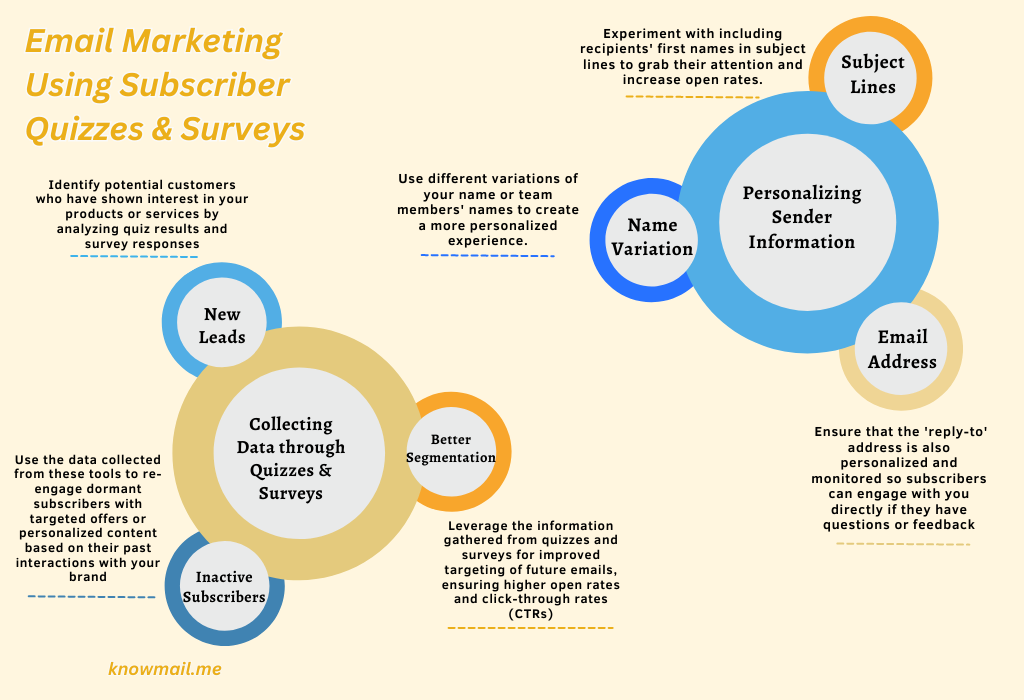
Collecting Data through Quizzes & Surveys
Including quizzes and surveys into your email advertising plan not only draws in your subscribers but also furnishes knowledge on their inclinations, hobbies, and practices. For example, you could create a Typeform quiz related to your industry or niche that encourages users to share their results on social media. This increases brand awareness and helps grow your email list organically with interested individuals.
Personalizing Sender Information
To further enhance engagement levels in your email campaigns, consider personalizing sender information so that it appears as though the message is coming from an individual rather than just a company name. Research has shown that emails sent from a person’s name have higher open rates compared to those sent from generic company names. This alteration can have a major impact on the effectiveness of your email campaigns.
Here are some tips for personalizing sender information:
Creating Effective Opt-In Forms & Lead Magnets
To draw the attention of your target audience and motivate them to join your mailing list, opt-in forms and lead magnets are essential components. This is where opt-in forms and lead magnets come into play. This section will discuss how to create captivating opt-in forms and irresistible lead magnets that can boost your subscriber base.
Choosing the Right Opt-In Form
The first step in creating an effective opt-in form is determining which type will work best for your business. There are several options available, including:
Weighing up UX and conversion, test different types to decide what’s best for you. For example, some studies suggest that fullscreen overlays have higher conversion rates than popups. Testing different styles is key to discovering what your viewers appreciate.
Crafting Irresistible Lead Magnets
A lead magnet is an incentive offered to visitors in exchange for their email address. This can be anything from a free e-book or whitepaper to exclusive discounts and access to webinars. The key is providing value that your target audience finds irresistible, encouraging them to opt-in.
Here are some tips for creating compelling lead magnets:
- Identify your audience’s pain points: Determine the challenges and problems your target market faces, then create content that addresses these issues.
- Create high-quality content: Ensure that whatever you offer as a lead magnet (e.g., e-books, videos) is well-produced and valuable enough for users to want it.
Leveraging Email Marketing Tools like Mailchimp
Email marketing platforms, such as Mailchimp, offer a wide range of features and tools to help you optimize your email campaigns. Subscriber behavior insights provided by email marketing platforms such as Mailchimp allow for improved targeting and personalization of campaigns.
Benefits of using an email marketing platform
Scaling with growth through flexible plans
The great thing about Mailchimp is its flexibility in accommodating businesses of all sizes. They offer both free and paid plans so you can choose the one that suits your needs best without breaking the bank.
The Free plan allows up to 2,000 contacts and includes basic features like automation workflows, A/B testing capabilities, and access to templates – perfect if you’re just starting out. As your audience grows, you can upgrade to one of their paid plans which offer additional features such as advanced segmentation, multi-step automations, and priority support.
For newbies, Mailchimp supplies 24/7 help for 30 days without charge. This means that if you encounter any issues or have questions about using the platform, help is just a click away. Additionally, they provide step-by-step tutorials covering everything from setting up your account to creating successful email campaigns – making it easy for anyone to get started with email marketing.
Adhering to Digital Privacy Laws & Regulations
In today’s digital landscape, it is crucial for email marketers to comply with privacy laws and regulations such as the General Data Protection Regulation (GDPR) and the California Consumer Privacy Act (CCPA). These regulations protect consumers’ information while ensuring businesses handle data responsibly. This piece looks at the value of following these laws and how adding personalization and automation can improve your email marketing approach.
Importance of Complying with GDPR & CCPA Regulations
Incorporating Personalization & Automation Techniques
As you work towards complying with digital privacy laws, leveraging email marketing trends like personalization and automation is essential. These strategies can help you create more engaging campaigns while adhering to the regulations:
How to Plan Your Email Marketing Strategy for 2023
Email marketing is an essential part of any digital marketing strategy. It helps businesses reach their target audience, promote products or services, and build relationships with customers. However, creating a successful email campaign requires careful planning and execution. In this section, we will discuss the steps you need to take to plan your email marketing strategy for 2023.
Define Your Business Goals
Before starting any email campaign, defining your business goals is crucial. What do you want to achieve through your emails? Do you want more website traffic? More sales? Increased brand awareness? Once you have defined your goals, create a plan that aligns with them. This will help ensure that every aspect of your email campaigns supports these objectives.
Identify Your Target Audience
Knowing who your target audience is will help you tailor each message specifically to them. Start by analyzing customer data such as demographics and purchase history. Use this information to segment your email list into different groups based on shared characteristics or interests. By sending personalized emails relevant to each group’s needs and preferences, you can increase engagement rates significantly.
Create Compelling Content
The content of an email determines whether it gets opened or not; therefore, creating compelling content should be one of the top priorities when planning an effective email campaign in 2022. Consider using catchy subject lines that grab attention while still being concise enough so they don’t get cut off in recipients’ inbox previews. Additionally, use engaging visuals like images or videos along with clear call-to-actions (CTAs) which encourage readers towards taking action.
Email Design Analysis
It’s important to pay close attention to how visually appealing our design looks before hitting the send button. Knowmail offers great tools for checking if there are any issues regarding designs that may affect deliverability or spam filters.
Analyze Your Results
After launching each campaign, analyze its results. This will allow us to make data-driven decisions on how we should proceed in future campaigns. Track metrics like open rates, click-through rates (CTR), conversion rates, etc., which helps identify what worked well and what needs improvement. In conclusion, by following these steps while keeping up with current trends including personalized content delivery, automation tools usage, and mobile optimization strategies, businesses can create successful email marketing plans for 2022 that drive engagement and sales growth from their customers.
FAQs about Email Marketing Plan
Conclusion
Developing a successful email marketing plan requires careful consideration of several key factors. Following these guidelines, businesses can create highly targeted campaigns that engage subscribers and drive revenue. Remember to maintain trust with your subscribers by avoiding buying lists or engaging in spammy tactics. If you’re looking for an AI-powered solution to help optimize your email productivity while maintaining focus on the most important messages in your inbox as part of your overall email marketing strategy, try Knowmail.

